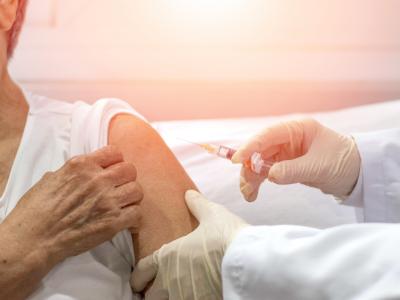US data show overall drop in antibiotic prescribing, but not for adults
US nationwide prescribing data show that oral antibiotic prescription rates dropped 5% from 2011 to 2016, and the ratio of broad- to narrow-spectrum antibiotics decreased 8% in that span, but prescribing rates in adults rose slightly, according to a new study in Clinical Infectious Diseases.
The investigators, from the Centers for Disease Control and Prevention, used prescription information from the IQVIA Xponent database over the 6-year study period. They used Poisson models to estimate prevalence ratios to compare 2011 and 2016 antibiotic prescription rates and linear models to evaluate temporal trends.
The researchers found that oral antibiotic prescription rates decreased 4.7%—from 877 prescriptions per 1,000 people in 2011 to 836 per 1,000 people in 2016. Prescription rates for pediatric patients (19 and younger) fell 13.0%, while adult rates actually increased a bit, by 1.7%. The ratio of broad- to narrow-spectrum antibiotics dropped from 1.62 to 1.49, or 8.0%, driven by reductions in macrolides and fluoroquinolones.
The proportion of prescriptions written by nurse practitioners and physician assistants increased by 95.0% and 58.5%, respectively, during the study period, and these professionals accounted for more than a fourth of all antibiotic prescriptions by study's end.
The authors conclude, "Although overall and broad-spectrum antibiotic prescriptions decreased during the study period, there are likely further opportunities to improve prescribing, especially to adults, and additional stewardship interventions are needed." They add that antimicrobial stewardship efforts need to include nurse practitioners and physician assistants.
Mar 16 Clin Infect Dis abstract
Support for shorter antibiotic course for Pseudomonas in bloodstream
Patients receiving short-course antibiotic therapy for uncomplicated Pseudomonas aeruginosa bloodstream infection (BSI) had similar odds of recurrent infection or death as those receiving longer courses, and spent fewer days in the hospital, researchers from Johns Hopkins University School of Medicine reported today in Clinical Infectious Diseases.
Overall, 361 patients treated in the Johns Hopkins Health System for P aeruginosa BSI from July 2016 through October 2018 were evaluated, and 249 met the eligibility criteria for the study. Sixty-nine patients (28%) received short-course therapy (median duration, 9 days) and 180 (72%) received long-course therapy (median, 16 days). Sixty-five percent of the cohort consisted of severely immunosuppressed patients. Antibiotics prescribed included piperacillin/tazobactam, cefepime, ciprofloxacin, meropenem, and ceftazidime.
In the propensity-score weighted cohort, the primary outcome of recurrent P aeruginosa infection or mortality within 30 days of completing therapy occurred in 10 (14%) of patients in the short-course group and 24 (13%) of patients in the long-course group (odd ratio, 1.06; 95% confidence interval [CI], 0.42 to 2.68, P = 0.91). On average, patients who received short-course therapy spent 4 fewer days in the hospitals compared with patients receiving longer courses (4.04 days; 95% CI, 1.25 to 6.83, P = 0.005).
The authors of the study say further interventional studies are needed to evaluate the reproducibility of the findings
Mar 18 Clin Infect Dis abstract
Antibiotic-releasing 'envelope' for cardiac devices tied to less infection
A study yesterday in the New England Journal of Medicine showed that an added antibacterial mesh envelope led to 40% fewer infections related to major cardiac implantable electronic devices (CIEDs) than did standard infection-prevention strategies alone.
The researchers used an absorbable TYRX envelope designed to hold a CIED—such as a pacemaker—when the device is implanted in the body. The envelope, made by Medtronic, consists of a multifilament knitted mesh coated with an absorbable polymer mixed with minocycline and rifampin, which releases the antibiotics into surrounding tissue for at least 7 days. The envelope is fully absorbed by the body in about 9 weeks, the authors said.
The scientists randomized 3,495 patients to the envelope group and 3,488 patients to the control (standard treatment) group. After 1 year, 6.0% of patients in the envelope group and 6.9% of patients in the control group had infections, for a hazard ratio (HR) of 0.87 (95% confidence interval [CI], 0.72 to 1.06; P < 0.001 for non-inferiority). The mean follow-up was 20.7 months, and major CIED-related infections through the entire follow-up period occurred in 32 patients in the envelope group and 51 patients in the control group (HR, 0.63; 95% CI, 0.40 to 0.98).
The authors conclude, "Adjunctive use of an antibacterial envelope resulted in a 40% lower incidence of major CIED infection than standard-of-care infection-prevention strategies alone. Patients who received the envelope did not have more procedure-related or system-related complications than those who did not receive it."
Mar 17 N Engl J Med study













